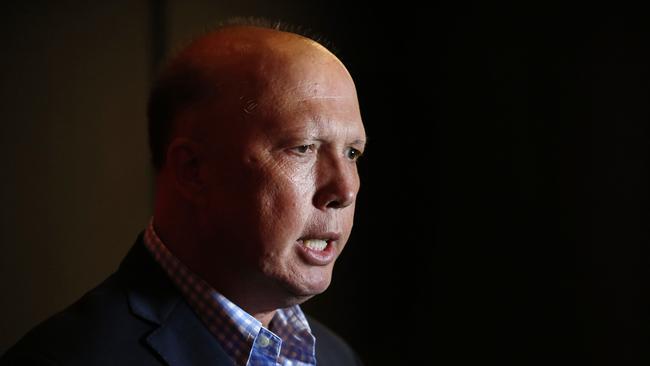National security clampdown on cyber defences
Companies, institutions will need to co-operate with national security agencies under sweeping critical infrastructure laws.

Companies and institutions across the banking, finance, defence, communications, food and grocery and higher education sectors will be obliged to strengthen their cyber defences and co-operate with national security agencies in repelling malicious attacks under sweeping critical infrastructure laws.
Amid increasing threats from state-based actors and transnational criminal organisations targeting Australian governments, energy and water operators, companies and universities, the Morrison government is moving to implement the nation’s biggest critical infrastructure shake-up.
An exposure draft of the Security Legislation Amendment (Critical Infrastructure) Bill, released on Monday, includes new step-in powers allowing national security agencies to actively disrupt and repel cyber attackers.
The critical infrastructure framework will also extend regulatory security obligations outside the electricity, gas, water and maritime sectors.
An enhanced definition of critical infrastructure, aimed at avoiding “catastrophic” disruption to our economy and security will cover the banking and finance, food and grocery, health, transport, energy, water, communications, space, data and the cloud, higher education, research, and defence industry sectors.
Home Affairs Minister Peter Dutton said the government would work with impacted sectors to implement its plan to secure essential services “without imposing an unnecessary regulatory burden”.
“The increasingly interconnected nature of critical infrastructure exposes vulnerabilities that could result in significant consequences to our economy, security and sovereignty and industry will be important to the success of these reforms,” he said.
High-profile cyber attacks in the past two years have targeted federal parliamentary networks, water services, airports, logistics companies and universities.

There has also been an increased focus on health sector organisations and medical research facilities, which are considered vulnerable to cyber attacks.
While the government has avoided naming state-based actors targeting Australian interests, China has been widely blamed for industrial-scale cyber attacks, which escalated during the pandemic.
Telstra chief executive Andy Penn, chair of the Cyber Security Strategy Industry Advisory Panel, said the draft legislation followed a “consistent approach that focuses on building the nation’s resilience and security in response to expanding cyber threats”, while minimising “duplication of existing obligations and supporting a level playing field for our economy”.
“We need these systems to remain secure and resilient to ensure we are able to maintain our social and economic interconnectedness and bounce back post-COVID,” Mr Penn said.
Cyber Security Co-operative Research Centre chief executive Rachael Falk said the changes were essential to ensure Australia remained a “safe and trusted place to do business”.
“We know state-based actors and sophisticated criminal syndicates are increasingly looking to exploit any weakness,” she said.
Ms Falk, who is working with Mr Penn on the advisory panel, said up to 80 per cent of ASX-listed companies could potentially be impacted by the government’s reforms. “That is just ASX-listed companies; across the entire economy, a multitude of businesses will be involved. Given the increasingly connected and digitised nature of critical infrastructure, the need and expectation of critical infrastructure entities to manage cyber risks effectively is paramount,” she said.
The security reforms include positive security obligations, enforcing baseline protections against “all hazards for critical infrastructure and systems, implemented through sector-specific standards proportionate to risk”.
Under cyber security obligations, the government can request information contributing to “a near real-time national threat picture” and require entities to support the “co-development of a scenario-based ‘playbook’ that sets out response arrangements”.
The government’s intervention powers include bringing systems back online to restore normal functions, and accessing, analysing and modifying networks (including installing, searching or temporarily bringing a service or network offline to protect it from malicious activity).
Critical infrastructure entities will be subject to varying aspects of the reforms. The Australian understands measures will increase scrutiny of company boards.








To join the conversation, please log in. Don't have an account? Register
Join the conversation, you are commenting as Logout